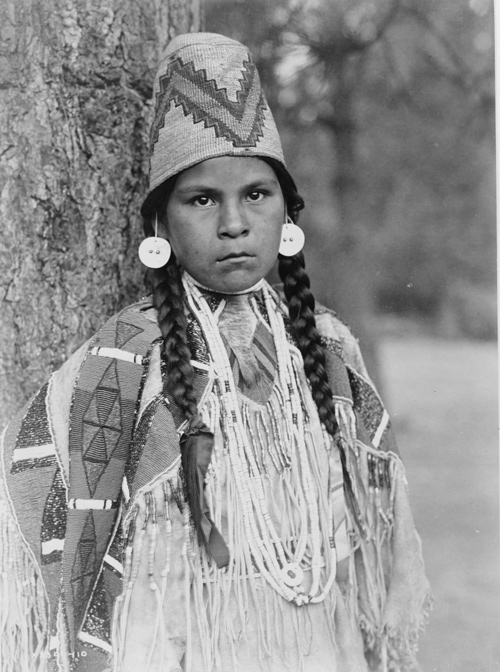Umatilla Maiden (c. 1910)
Edward S. Curtis (1868–1952)
Retrieved from the Library of Congress, www.loc.gov/item/94507923, accessed 14 July 2019.
Umatilla is derived from the name of a winter village at the mouth of the Umatilla, ímatilam meaning ‘rocky place’ or ‘lots of rocks’. Whenever mounted Paiutes raided, they retreated to Blalock Island, now inundated.[1]Robert H. Ruby, John A. Brown, and Cary C. Collins, A Guide to the Indian Tribes of the Pacific Northwest (Norman: University of Oklahoma Press, 2010), 358–59; Theodore Stern, Handbook of North … Continue reading
After emerging from the Wallula Gap on 19 October 1805, Clark came across some Umatillas hiding in their lodges, and he committed a serious faux pas by entering without permission:
found the Indians much fritened, all got in to their lodges and I went in found Some hanging down their heads, Some Crying and others in great agitation, I took all by the hand, and distributed a few Small articles which I chanced to have in my Pockets and Smoked with them which expelled their fears . . . . I am confident that I could have tomahawked every Indian here.
Things went better, according to Clark, when they saw Sacagawea and baby Jean Baptiste, whose presence “confirmed those people of our friendly intentions, as no woman ever accompanies a war party of Indians in this quarter.” In the evening, they smoked together and Pierre Cruzatte and George Gibson “played the “played on the violin which delighted them greatly.”
In late 1949, the Umatillas, Cayuses, and Walla Wallas officially became The Confederated Tribes of the Umatilla Indian Reservation, an alliance based on their Stevens Treaty of 1855.[2]Brown, 83.
Selected Encounters
October 16, 1805
A musical welcome
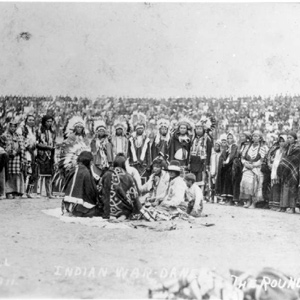

Snake and Columbia rivers, WA The paddlers negotiate the last of the Snake River rapids and arrive at the Columbia River where they are given a musical welcome from a large group of Yakamas and Wanapums. They give the Indians tobacco, peace medals, and other gifts.
October 18, 1805
Down the Columbia
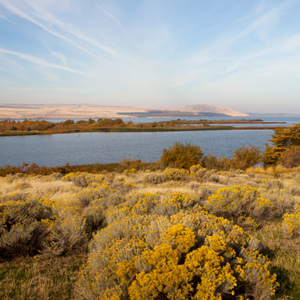

Wallula Gap, WA The captains council with the Wanapums and Yakamas and records Sahaptian vocabularies. Clark measures the widths of the Snake and Columbia rivers. Late in the day, the expedition heads down the Columbia.
October 19, 1805
The Walla Walla and Umatillas
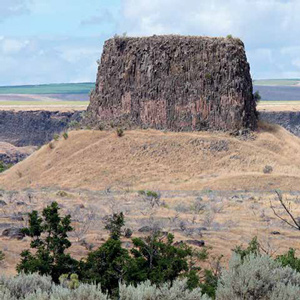

Boardman, OR Before departure, the captains hold a council with Walla Walla Chief Yellepit. After passing through the Wallula Gap, Clark frightens several Umatilla Indians and works to gain their trust. The day ends with mutual smoking and fiddle music.
April 25, 1806
Horse heaven
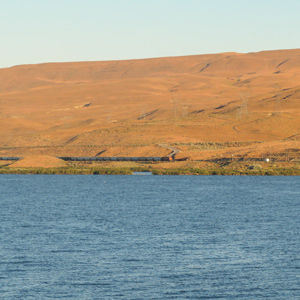

During a march of 20 miles, the travelers stop at a large Pish-quit-pah village that have never seen white men before. Lewis remarks on the abundant bunch grass of the Horse Heaven Hills.
April 26, 1806
A crowded, dusty trail
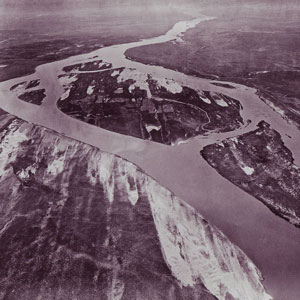

The Corps continues along the north shore of the Columbia River reaching the low plains near present Plymouth, Washington. A young boy catches several Columbia River chub, a species new to science.
Notes
| ↑1 | Robert H. Ruby, John A. Brown, and Cary C. Collins, A Guide to the Indian Tribes of the Pacific Northwest (Norman: University of Oklahoma Press, 2010), 358–59; Theodore Stern, Handbook of North American Indians: Plateau Vol. 12, ed. Deward E. Walker, Jr. (Washington, D.C.: Smithsonian Institution, 1998), 419. |
|---|---|
| ↑2 | Brown, 83. |
